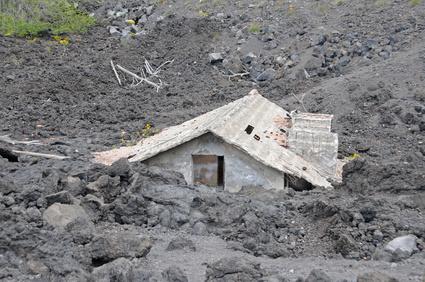When an area has been impacted by a natural disaster, after the initial rescue and emergency medical care have been addressed, the next step in any effort is to figure out how to shelter those whose housing has been rendered uninhabitable or inaccessible by the disaster. 3D printing has featured prominently in efforts to confront this difficult issue and has presented a variety of innovative responses.
But what about when the area where the people are in need cannot be reached by emergency services personnel? This latest intervention in this complicated but urgently necessary exploration comes from a collaboration among researchers at the Imperial College, University College London, and the University of Bath. Their contribution to disaster housing technology takes the form of flying drones with the ability to print structures in areas that have been impacted by natural disaster, even in places where human helpers cannot yet arrive from the outside. The idea has resulted in the planning and funding of a four-year-long research project that was impressively named: “Aerial Additive Building Manufacturing: Distributed Unmanned Aerial Systems for in-situ Manufacturing of the Built Environment.”
The researchers noted that their primary objectives, thanks to industrial partnerships with Skanska, Ultimaker, BuroHappold, Dyson, and BRE, include:
Aerial ABM Hardware
– A novel Aerial ABM robot design with autonomous vision based stabilisation, navigation and mapping of a dynamically changing environment that is optimised for flight and 3D Printing tasks.Aerial ABM Autonomy
– A framework for autonomous manufacturing that utilises swarm intelligence for collaborative robot-to-robot operations, dynamic task sharing/allocation, adaptive response to context and dynamic environment content involving functions such as new methods of collision avoidance.
– Develop new modes of communication and control that enable the safe co-existence and cooperation of human workers, other robots and Aerial ABM robots on construction sites. Novel research in human-robot interaction, feedback and haptic interface functionalities will enable manufacturing flexibility suitable for construction sites that are always unique in size, shape and contextual complexity.
– An integrated design and real-time structural analysis software that delivers optimal structural integrity from minimal material weight within building design strategies that leverage this free-form manufacturing process to create innovative building design possibilities.Aerial ABM Materials and Structures
– Development of new high-performance 3D-printable composite material and deposition procedures for the additive manufacture (3D Printing) of free-form light-weight building structures utilising autonomous UAS.
“[T]he drones would fly to the site and just observe what is happening. Once the site has been identified where, for example, shelters would be needed, then we can create the virtual model on the computer offsite, away in a safe zone, then send the drones with those materials on board to, in swarms, construct those types of shelters.”
“If you think of the future smart city, the question arises, what is smart about it? One aspect of this smartness in the city is the sensing, the distruted knowledge, information, intelligence. But it is also the reaction to that information. So, in that context, the drones can help to gather the information, to sense the environment, inspect structures, inspect buildings, for example, and then be used to repair or maintain those buildings, and eventually also to construct those buildings.”
While something like this is still years away, it’s a far cry from the overly ambitious science fiction predictions of flying cars and holodecks, and addresses a farm more practical and pressing concern that could eventually make an enormous impact on the lives that need it most.
“It is exciting to be working on a project where the structure has to be so light and efficient that it can be built by small flying drones,” said Dr. Chris Williams, co-investigator and Senior Lecturer in the Department of Architecture & Civil Engineering at the University of Bath.
Researchers involved in the project include Principal Investigator Mirko Kovac and Co-Investigators Robert Stuart-Smith, Christopher John Williams, Richard James Ball, Stephan Leutenegger, and Mandayam A. Srinivasasn. Discuss this project in the 3D Printed Disaster Housing forum over at 3DPB.com.
[Images: University of Bath, GCR]